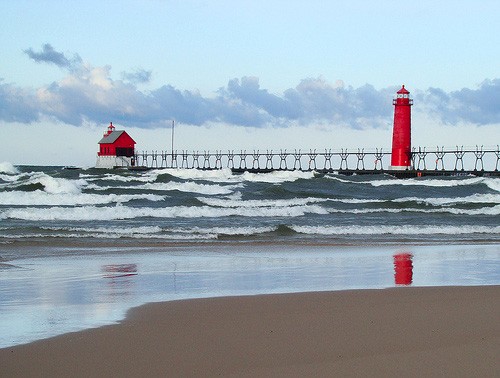MAREC launches wind energy research on Lake Michigan

Courtesy Photo / blogs.nationalgeographic.com Lake Michigan will be the host of a new research buoy launched by the Michigan Alternative and Renewable Energy Center.
Jan 10, 2011
As part of the ever-expanding sustainability initiative, Grand Valley State University’s Michigan Alternative and Renewable Energy Center (MAREC) is leading a $3.7 million federally-funded grant project exploring renewable wind energy on Lake Michigan.
Arn Boezaart, director of MAREC, said the project is a culmination of efforts by various partners, including the University of Michigan and Michigan Memorial Phoenix Energy Institute. The project, he said, is aimed at learning more about Lake Michigan’s wind conditions with “an eye toward possible development of offshore wind energy generation technology” in the future.
“Wind is an important commercial renewable energy resource for Michigan in the future along with other technologies such as solar, geothermal, biomass, etc,” said Norman Christopher, director of GVSU’s Sustainability Initiative. “MAREC continues to demonstrate its leadership in building collaborations and partnerships in West Michigan to help develop this technology and address issues and concerns relating to broader commercialization.”
Boezaart said the team hopes to place a large research buoy in Lake Michigan in late spring or early summer of this year. The buoy would gather wind data using state of the art LIDAR infrared technology.
LIDAR, which stands for Light Detection and Ranging, is an optical remote sensing technology that measures properties of scattered light to find range of a distant target. Although the process is similar to radar technology, LIDAR does not use radio waves. It determines the range of an object by measuring time delay between transmission of a pulse and direction of the reflected signal.
Boezaart said the research project is important to learning more about potential wind energy on the Great Lakes and contributing to other research efforts in weather and biological conditions.
He added a side partnership with researchers from Michigan State University will study the presence of bird and bat activity on the lakes.
The project has a projected duration of three years.
“As our country seeks to end its heavy dependency on foreign sources of oil and as we begin to address the issue of reducing our green house gas emissions, it is critical that we develop a range of energy alternatives,” Boezaart said. “Offshore wind energy will be explored and developed in the coming years on both our ocean coasts as well as on the Great Lakes.”






















